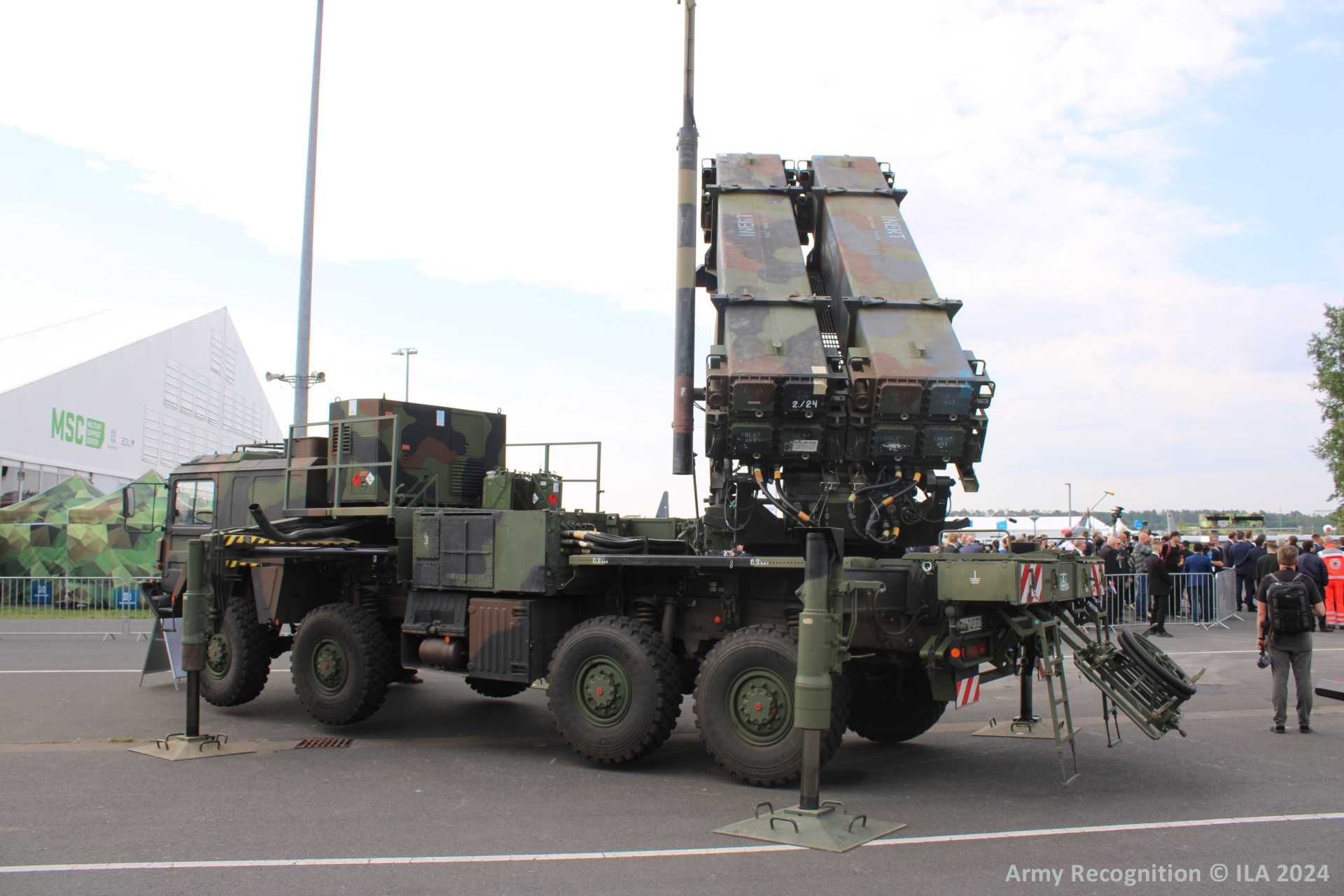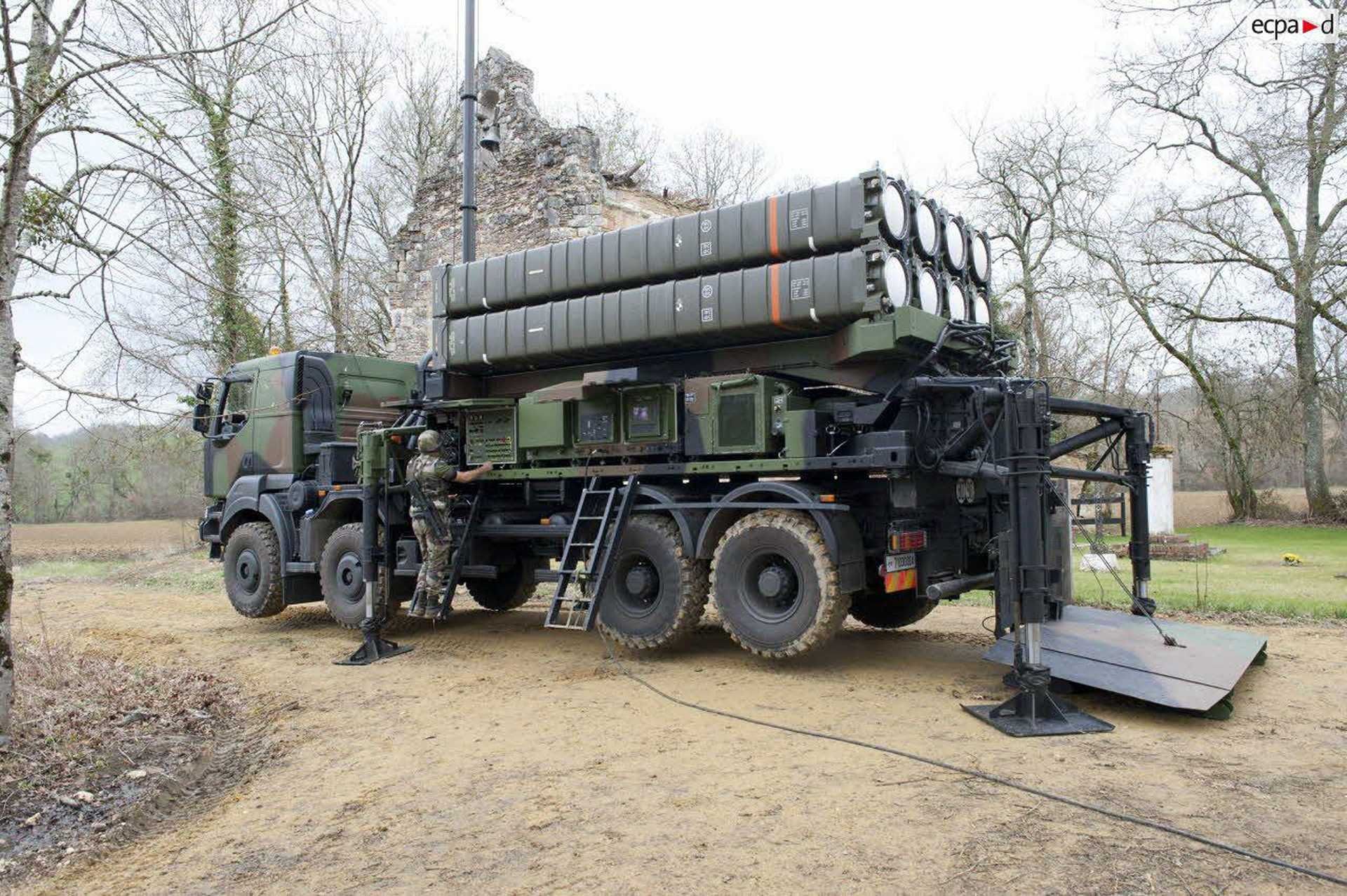Breaking News
Will US policy change on Greenland push Denmark to bet on European air defense systems over American counterparts?.
As reported by Hans Tino Hansen on March 14, 2025, Denmark has officially narrowed its selection for a long-range ground-based air defense (GBAD) system to the American Patriot and the Franco-Italian SAMP/T NG. The country is also considering NASAMS, IRIS-T SLM, VL-MICA, and IFPC for its short-to-medium-range air defense program. Current assessments indicate that SAMP/T NG and NASAMS are the leading candidates for Denmark’s long-range and short-range GBAD requirements, respectively.
Follow Army Recognition on Google News at this link

The European SAMP/T NG is equipped with the Aster 30 B1NT missile, which has an interception range of up to 150 km, while the American Patriot uses the PAC-3 MSE missile, with a range of up to 160 km. (Picture source: Army Recognition and US DoD)
The selection of a long-range air defense system comes at a time when American defense products, including the Patriot, are facing increased scrutiny in Denmark. Tensions between Denmark and the United States, particularly over U.S. policies regarding Greenland, have led Copenhagen to reassess its defense procurement strategy. Statements by U.S. President Donald Trump and Vice President J.D. Vance regarding European allies have further raised concerns about the long-term reliability of American defense commitments. In response to these developments, the Danish government has allocated 14.6 billion kroner ($2.05 billion) to its Arctic defense budget. This investment aims to strengthen Denmark’s military presence in Greenland and the surrounding region and includes funding for three new Arctic naval vessels and enhanced surveillance capabilities to secure Greenland’s territorial waters and airspace. The decision follows renewed tensions with the United States after former President Donald Trump reiterated interest in acquiring Greenland, reinforcing Denmark’s focus on maintaining control over its Arctic territories and addressing broader security concerns in the region.
Therefore, European defense manufacturers have reported increased inquiries from European governments exploring alternatives to U.S.-made defense systems. Companies such as MBDA have indicated that recent political developments have contributed to European militaries seeking to diversify their procurement strategies. In this context, French President Emmanuel Macron has publicly advocated for European nations to prioritize European defense equipment over American alternatives. In a recent statement, Macron said, "Those who buy Patriot should be offered the new-generation Franco-Italian SAMP/T. Those who buy the F-35 should be offered the Rafale." He has consistently emphasized that European countries should develop and procure their own defense systems to reduce dependency on non-European suppliers, including the United States.
However, the Danish Defense Acquisition and Logistics Organization (DALO) has specified that its selection process prioritizes NATO interoperability, security of supply, operational performance, and delivery schedules. Given the urgency of the acquisition, Denmark is pursuing a two-step approach: securing an initial solution deliverable between 2025 and 2026 while simultaneously planning for a long-term air defense system to be deployed by 2028. The projected timeline for SAMP/T NG availability, which is expected to be operational starting in 2026, may influence the selection process if earlier deliveries are required. Discussions are also ongoing regarding the possibility of Denmark receiving a NASAMS battery on loan from Norway. The procurement process is divided into two phases: an immediate acquisition with deliveries expected between 2025 and 2026 and a long-term acquisition aimed at full implementation by 2028.
Denmark is a participant in the European Sky Shield Initiative (ESSI), which was launched by Germany in 2022 within NATO’s framework to establish a multilayered air defense system. The initiative is centered on joint acquisitions of the IRIS-T SLM, Arrow 3, and Patriot PAC-3 systems. The SAMP/T NG was not included in ESSI, leading France and Italy to remain outside the initiative. Despite Denmark’s participation in ESSI, its decision to consider both the Patriot and SAMP/T NG independently reflects a broader approach to evaluating its long-range air defense options.

The selection of a long-range air defense system comes at a time when American defense products, including the Patriot, are facing increased scrutiny in Denmark. (Picture source: Army Recognition)
Danish Defense Minister Troels Lund Poulsen has stated that strengthening Denmark’s ground-based air defense is a priority. He emphasized that both short- and long-term solutions must be identified to ensure the country meets its NATO commitments. He further outlined that the selection process must determine the most suitable system for national defense while maintaining interoperability with allied forces. Poulsen expects a final political decision by mid-2025, allowing for the contract to be signed and deliveries to proceed accordingly.
Denmark’s air defense acquisition is among the country’s most substantial military procurement programs, with an estimated cost ranging from 19 to 25 billion Danish kroner. This budget could increase if NATO requests additional systems beyond the planned one long-range and two short-range GBAD units. Denmark has committed to increasing its defense spending, allocating 3.2 percent of its GDP to military expenditures by the end of 2025. To expedite procurement, the Danish government has opted to bypass standard tendering procedures, granting military leadership greater decision-making authority. Poulsen acknowledged that accelerating acquisitions would likely lead to increased costs, estimated to be 10 to 15 percent higher than standard procurement processes, but justified the approach as necessary to meet immediate security requirements.
Both the SAMP/T NG and Patriot offer advanced long-range air defense capabilities, but their combat records and configurations differ. The Patriot has been used in multiple conflicts, including the Gulf War, the Syrian Civil War, and Ukraine, where it has been deployed against cruise missiles, ballistic missiles, and aircraft. The SAMP/T NG has recorded over 100 live engagements in Ukraine and the Red Sea, including interceptions of drones, cruise missiles, and ballistic threats. Reports indicate that its interception rate exceeds 90 percent, similar to the effectiveness reported for the Patriot in comparable engagements.
The two systems also differ in missile configurations, mobility, and launcher capabilities. The Patriot uses the PAC-3 MSE missile, which has an interception range of approximately 35 km for ballistic missiles and 160 km for aircraft. The SAMP/T NG is equipped with the Aster 30 B1NT missile, which has an interception range of up to 150 km and is designed for maneuvering targets. The Patriot system is mounted on semi-trailers, which require additional logistical support and longer deployment times. In contrast, the SAMP/T NG is mounted on 8x8 military trucks, allowing for greater mobility. The SAMP/T NG battery can carry up to 48 ready-to-fire missiles, whereas a Patriot battery typically carries fewer missiles per launcher, requiring more frequent reloading during sustained operations. These technical factors will be central to Denmark’s final decision on its long-range air defense procurement.

In a recent statement, French President Emmanuel Macron said, "Those who buy Patriot should be offered the new-generation Franco-Italian SAMP/T. Those who buy the F-35 should be offered the Rafale." (Picture source: French MoD/ECPA)


























